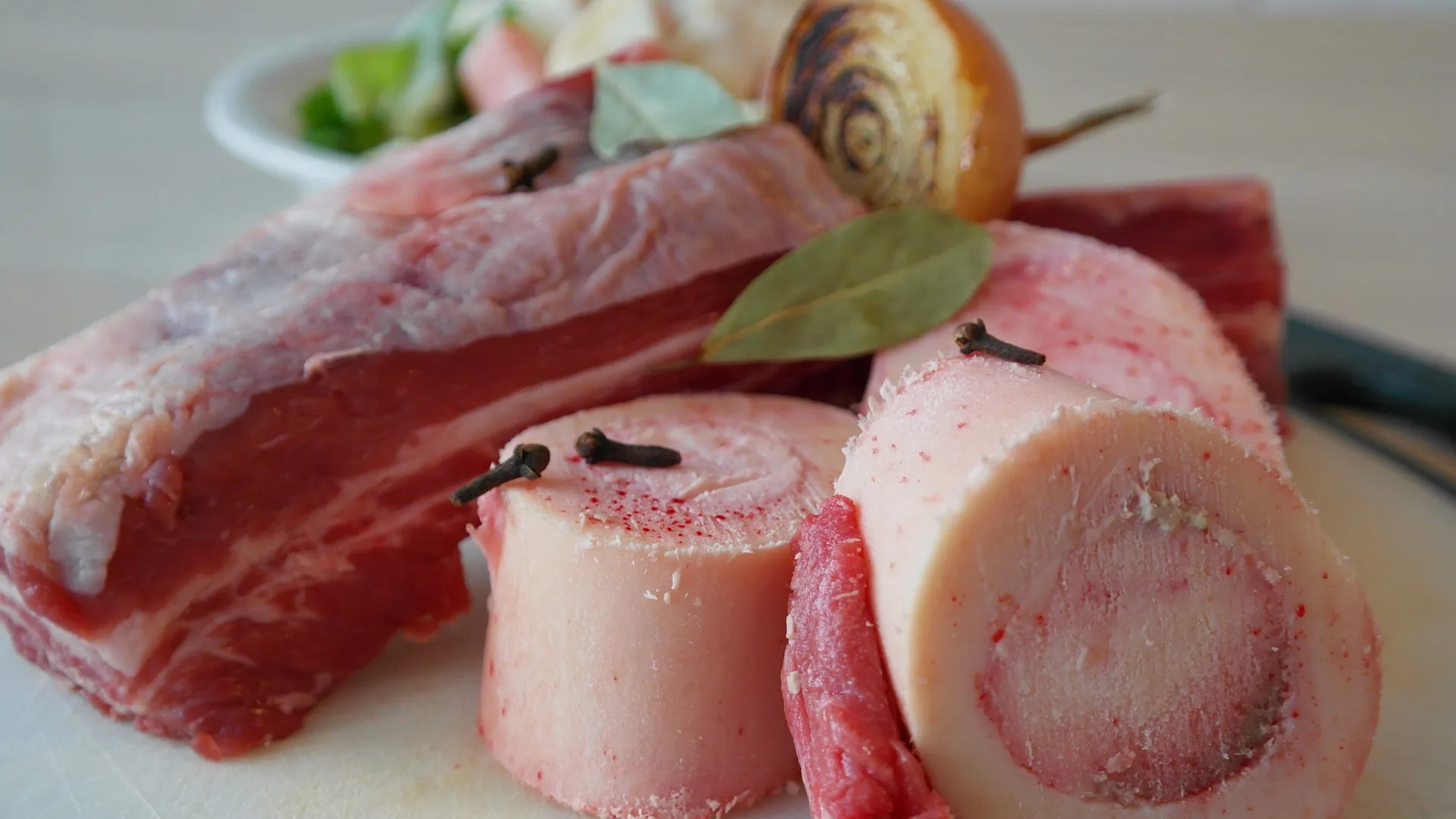Dogs love to chew on bones, but in some cases it can get pretty dangerous. Basically, raw bones of lamb and beef can be safely fed. Boiled bones are a taboo in any case, as they can splinter and thus hurt the dog. But when it comes to marrow bones for dogs, the answer is a bit more complex.
Marrow bones are particularly nutritious and are also often used by us humans for broth. That’s why many believe that marrow bones are also suitable for dogs and provide them with nutrients.
But is that really good for your four-legged friend?
Marrow bones for dogs: Treat or danger?
The answer is more of a no than a yes. Marrow bones are good for dogs based on the ingredients. Provided they are raw and best from lamb or beef.
Did you know that many dog owners are scared pork bones? The reason for this is the Aujeszky virus, the so-called pseudo-rawn. So, the administration of raw pork is not recommended. And since bones become porous when cooked, the administration of pork bones is not recommended.
However, there is a danger behind the bones, because the risk of injury is very high for marrow bones. Especially if they have been sliced. The bone can slide over the dog’s lower jaw and warp in the mouth. This can lead to panic in your dog, injure your teeth and in most cases must be removed under general anesthesia at the veterinarian.
The consumption of bones should always be carried out under supervision anyway in order to prevent injuries or then be able to act immediately.
Since the risk of the fur nose being injured on a marrow bone is relatively high, consumption is not recommended!
There are also other ways to deal dogs with rodents and chews.
This is how marrow bones affect the health of the dog
Bones contain a lot of calcium and other valuable nutrients such as phosphorus, magnesium and zinc. Mark bones have the fatty bone marrow inside. Dogs like it very much and therefore they don’t want to leave a bit of the bone marrow.
Did you know that calcium is important for strong bones and teeth? Since it cannot be formed by yourself, it must be fed from the outside.
The danger lurks here, because with thorough licking, it can happen that the bone tilts in the mouth of the dog.
If this happens, the teeth can be injured, the dog can panic and try to get rid of the bone and do even more damage.
In most cases, the bone must then be removed by the veterinarian in a costly operation.
Bones are useful in the calcium supply and clean the dog’s teeth. But too much bone can harm your dog. If you already give your four-legged friend food with calcium, you should be more economical with bones.
What symptoms does a dog show if he has eaten too much marrow bones?
This will usually have an effect on blockages. Bone droppings can lead to intestinal obstruction. If the dog eats too much bone, they can be fed undigested into the rectum. There, water is then removed from the bone porridge and the rock-hard bone droppings are created.
Your dog can then get severe abdominal pain and no longer excretes feces. That’s a warning sign! Grab the dog and go to the vet.
Otherwise, you cannot see too much bone consumption directly. In the event of a constant oversupply, especially in young dogs, with calcium, this can lead to damage. In most cases, bone growth is negative instead of positive. Malpositions of the skeleton can be a consequence.
What to do if the dog has eaten marrow bones?
Since marrow bones are not harmful to the dog from the point of view of nutrients, the consumption of marrow bones is not bad. If your dog has eaten marrow bones and has not contracted injuries in the mouth, everything is fine and you don’t have to do anything.
Nevertheless, you should better refrain from feeding marrow bones in the future, especially if the marrow bone has been sliced.
If your dog has injured himself while eating, then it is best to see a veterinarian!

